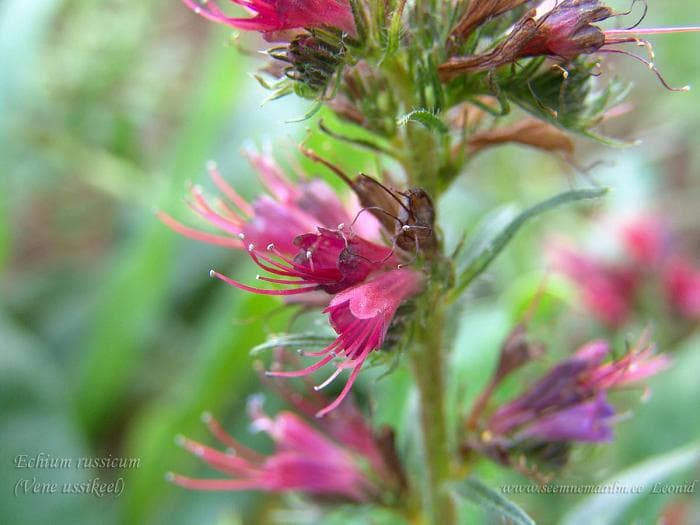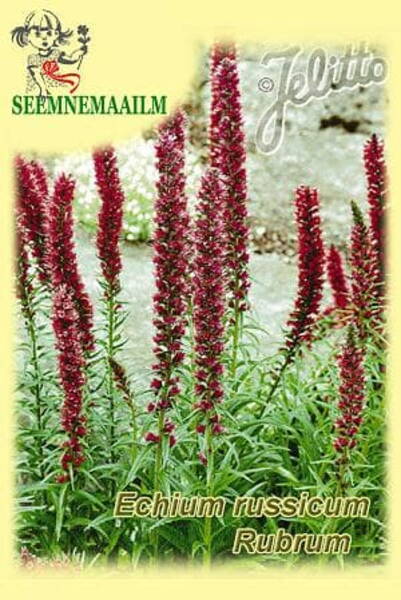Your shopping cart is empty!
Viper's bugloss
Viper's bugloss - Echium russicum.
Family: Boraginaceae.
Origin: Europe and Western Asia.
Color: dark red flowering panicles, similar to thick pipe brushes.
Natural flowering period: June - August.
Winter hardiness: Z6.
Growth type: vertical-columnar.
Foliage: linear to lanceolate.
Flowering height: 60 cm.
1.8 g = 1000 seeds.
Best sowing date: Anytime.
Sow seeds at constant soil moisture (not wet) at a temperature of about +20°C. Seeds should be covered with a thin layer. Store in cooler conditions after emergence. Germination may be slow and irregular, but this is not a problem.
From germination to transplant: 4-8 weeks.
Distance between plants: 45 cm.
Soil Requirements: well-drained, sandy soils, pH 5.8-6.8.
Location: sunny.
Uses: an interesting but little-used perennial for a border. Plant with Echinacea, Sidalcea and Stokesia.
Creates a great vertical effect in the garden.

Viper's bugloss. Bot.syn.: Echium rubrum, Echium clavatum Willd. ex Lehm., Echium kochii Litard., Echium maculatum L., Echium thyrsoideum, Isoplesion rubrum.
Family: Boraginaceae.
Origin: Europe and Western Asia.
Color: dark red flowering panicles, similar to thick pipe brushes.
Natural flowering period: June - August.
Winter hardiness: Z6.
Growth type: vertical-columnar.
Foliage: linear to lanceolate.
Flowering height: 60 cm.
1.8 g = 1000 seeds.
Best sowing date: Anytime.
Sow seeds at constant soil moisture (not wet) at a temperature of about +20°C. Seeds should be covered with a thin layer. Store in cooler conditions after emergence. Germination may be slow and irregular, but this is not a problem.
From germination to transplant: 4-8 weeks.
Distance between plants: 45 cm.
Soil Requirements: well-drained, sandy soils, pH 5.8-6.8.
Location: sunny.
Uses: an interesting but little-used perennial for a border. Plant with Echinacea, Sidalcea and Stokesia.
Creates a great vertical effect in the garden.

Viper's bugloss. Bot.syn.: Echium rubrum, Echium clavatum Willd. ex Lehm., Echium kochii Litard., Echium maculatum L., Echium thyrsoideum, Isoplesion rubrum.












